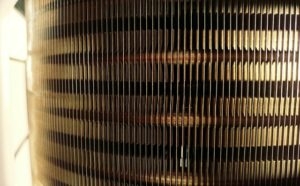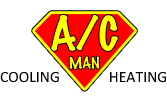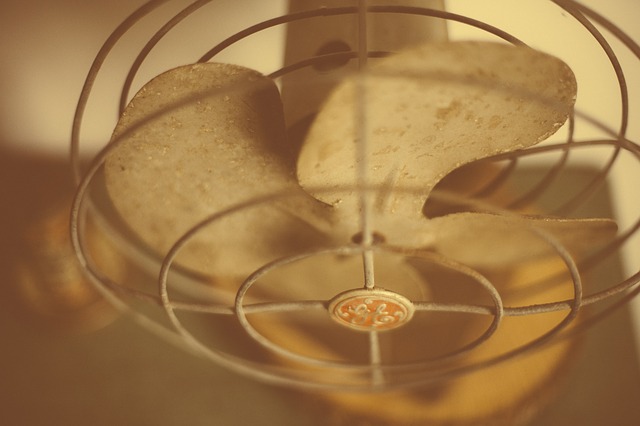Air Conditioner Maintenance Houston: Dealing With Mold
Why are so many air conditioning systems impacted by mold? The answer to that question is simpler than you might think.
Mold thrives in dark, damp, and dirty environments. It’s a big problem which is why some people get advice from https://dehumidifierreviewshq.co.uk/ for what dehumidifier can help them deal with mold. Dealing with mold is an essential part of air conditioner maintenance.
When mold spores move through the air, they seek out damp areas. Once they find the right spot, the spores begin to spread.
In my experience, a mold is more likely to appear on the outside of an air conditioner than the inside. It’s also more common to see mold on the outside of ducts than on the inside. Mold usually isn’t found internally. Instead, it is more likely to appear on truck lines, the exterior of air distribution plenums, and on supply air grills (images below).
If you’re trying to find a solution to your mold problem, there are a few questions you should be asking yourself.
First, you should figure out why water is forming around your air conditioner.
Once you’ve figured that out, you’ll want to find a way to get rid of the moisture.
If there’s no moisture, mold won’t be able to grow. If you can rid your air conditioner of water, mold won’t have a chance to grow. The moisture that is found on air conditioning systems often comes from condensation. Air conditioners combine cold temperatures with hot ones. Have you ever noticed droplets of water appearing on your cold beverages? It’s the same basic effect. The mold would appear on beer or soda cans too if we left them out for long enough.
 Addressing A Mold Problem
Addressing A Mold Problem
If you want to handle a mold problem, you’re going to have to identify problem areas first. Here are some of the areas that are most likely to be impacted:
- Supply Air Grills
- Supply Plenums
- Trunk Lines
- Flex Ducts
Thankfully, every one of these problems has a cure. If you’re trying to take care of mold on air grills, you could replace the grill in question. You should also make sure the grill has the right fit.
If you want to take care of supply plenum mold, you may want to replace the plenum with something that has a higher insulation value. You may also want to have a professional remeasure your duct sizing.
If you have mold on your trunk lines, your first step should be to replace the duct board. You could also try increasing the value of the insulation. Eliminating cold air leakage is a great first step.
Lastly, if you’re trying to deal with flex ducts mold, you should make sure that the ducts aren’t touching. If possible, you should keep a dehumidifier near the ducts. You may also want to have a professional measure the ducts and improve the airflow in the area.
It is more than possible to prevent mold from developing on your air conditioner. As long as your air conditioner is properly installed and maintained, you’ll be able to avoid issues like these. Air conditioning mold problems are completely preventable. Look into air conditioner maintenance Houston today.
If you have mold on your air conditioning system, you need to take care of it right away. Mold can cause many negative effects. It’s better to treat the problem sooner rather than later.
Call or contact AC Man Houston before it’s too late! One of our HVAC specialists is waiting and ready to address your mold issue! For an in-depth look at the services we provide, visit here.

 Short cycling occurs when your thermostat continuously turns your HVAC system on and off over a short period of time. This prevents the cooling system from completing the cooling cycle. Among the most common reasons that this happens is because the AC system is too large for the home that it’s installed in.
Short cycling occurs when your thermostat continuously turns your HVAC system on and off over a short period of time. This prevents the cooling system from completing the cooling cycle. Among the most common reasons that this happens is because the AC system is too large for the home that it’s installed in. A musty smell may be as a result of a clogged condensate line in the cooling unit, or due to mildew growing in the ductwork. Some of this may be due to the accumulation of water in the drip pan allowing mold to grow. Should the pan be misaligned in a way, then the drain line gets clogged from the stagnating water. While some AC systems will turn off automatically to prevent further damage, the excess water may short out electricals inside. Having the problem addressed, however, eliminates the problem.
A musty smell may be as a result of a clogged condensate line in the cooling unit, or due to mildew growing in the ductwork. Some of this may be due to the accumulation of water in the drip pan allowing mold to grow. Should the pan be misaligned in a way, then the drain line gets clogged from the stagnating water. While some AC systems will turn off automatically to prevent further damage, the excess water may short out electricals inside. Having the problem addressed, however, eliminates the problem. When ice accumulates, there’s something going wrong with the system that you will need to have serviced. It’s possible that you have a clogged air filter. The air filters purpose in an air conditioner is there to protect the working parts in the unit. If it becomes clogged it’s unable to work efficiently and heat will not be pulled over the evaporator coil as it should. That leads to the coil becoming too cold and any moisture there will begin to freeze. The ice then creates a barrier that makes the evaporator coil unable to do its job.
When ice accumulates, there’s something going wrong with the system that you will need to have serviced. It’s possible that you have a clogged air filter. The air filters purpose in an air conditioner is there to protect the working parts in the unit. If it becomes clogged it’s unable to work efficiently and heat will not be pulled over the evaporator coil as it should. That leads to the coil becoming too cold and any moisture there will begin to freeze. The ice then creates a barrier that makes the evaporator coil unable to do its job. Financial Savings: A whole-house dehumidifier does require an initial investment, just like there is for any type of indoor air quality system or product. However, when a dehumidifier is run, it allows you to adjust your air conditioner by a couple of degrees, or when the temperature is mild you can even shut if off, to help lower your energy bills and save money.
Financial Savings: A whole-house dehumidifier does require an initial investment, just like there is for any type of indoor air quality system or product. However, when a dehumidifier is run, it allows you to adjust your air conditioner by a couple of degrees, or when the temperature is mild you can even shut if off, to help lower your energy bills and save money. There are basically two main sources of low airflow: either something is reducing the power on what does the blowing or something is blocking air flow. If something is blocking the airflow, there may be ductwork damage, such as leaks or crimps. Or it might be a clogged air filter – which is easy enough to fix. If you happen to notice that only one or two of the vents are being impacted by the problem rather than your entire house, then most likely it is an issue with an air duct and not a problem with the actual system.
There are basically two main sources of low airflow: either something is reducing the power on what does the blowing or something is blocking air flow. If something is blocking the airflow, there may be ductwork damage, such as leaks or crimps. Or it might be a clogged air filter – which is easy enough to fix. If you happen to notice that only one or two of the vents are being impacted by the problem rather than your entire house, then most likely it is an issue with an air duct and not a problem with the actual system.